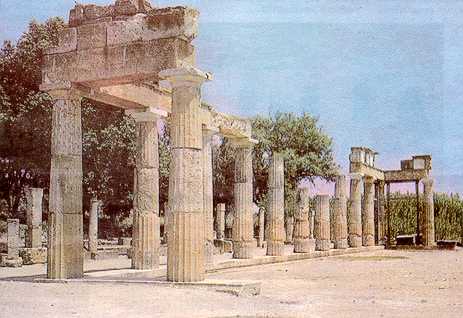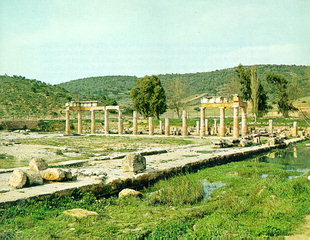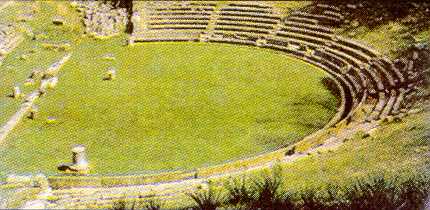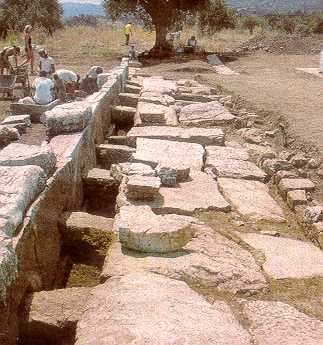 |
 |
 The Vravrona archaeological site has suffered from the flooding of the Erasinos River that flows through it since antiquity. The river will be diverted so that its water will not damage the Stoa and the other ruins of the site. The riverbed will be moved about 150 m. away from its present location and flood-preventing works will be constructed along a 2 klm. line defined by its flow.
The Vravrona archaeological site has suffered from the flooding of the Erasinos River that flows through it since antiquity. The river will be diverted so that its water will not damage the Stoa and the other ruins of the site. The riverbed will be moved about 150 m. away from its present location and flood-preventing works will be constructed along a 2 klm. line defined by its flow.
The site was devoted to Vravronia Artemis and at its sanctuary the goddess was worshipped as a protector of nature and hunting, birth delivery and infants.
Nowadays, a visitor can see the foundations of the 5th c. BCE Temple of Artemis, the Stoa, the Ifigenias's Heroon and the stone bridge over the Erasinos River.
 The Theater of Megalopolis in the Peloponesse was built in the 4th. c. BCE and it is located about 1 klm north of the modern city of Megalopolis. It was built of the local limestone and could accommodate 18,000-20,000 spectators. The Greek Central Archaeological Board has decided to protect it from flooding and conduct some works of preservation.
The Theater of Megalopolis in the Peloponesse was built in the 4th. c. BCE and it is located about 1 klm north of the modern city of Megalopolis. It was built of the local limestone and could accommodate 18,000-20,000 spectators. The Greek Central Archaeological Board has decided to protect it from flooding and conduct some works of preservation.
Recent excavations at Messene, the Peloponnese, have brought to light modern-type toilets at the gymnasium. The 3rd c. BCE toilets were constructed in the form of holes in between specially arranged stones. Water flew underneath in order to take the feces away.
 |
The excavations conducted by Prof. P. Themelis also revealed that the city, which was built by Epameinondas in 369 BCE, was designed according to the Hippodamian city planning system. In other words, the city was composed of blocks that measured 40 by 80 m. Each block included three houses (20 by 40 m.).
Moreover, Christian pottery and coins suggest that the area was inhabited until the 16th c. CE against the present belief that life in Messene stopped in the 4th c. CE when the town was destroyed by the Goths. Moreover, Themelis believes that locals and newcomers (the so called Germanic and Slavic invaders) lived together peacefully for centuries and the latter may have been hellenized.
 An ancient cemetery that had been used from the 8th c. BCE to the roman times was uncovered in Kifissia, an Athenian northern suburb. The archaeologist D. Skirlandi excavated a piece of land on the corner of Acharnon and Socrates modern Streets in Kifissia and found geometric, classical and roman period pottery. Among them, a 4th c. BCE vase made of marble catches the eye.
An ancient cemetery that had been used from the 8th c. BCE to the roman times was uncovered in Kifissia, an Athenian northern suburb. The archaeologist D. Skirlandi excavated a piece of land on the corner of Acharnon and Socrates modern Streets in Kifissia and found geometric, classical and roman period pottery. Among them, a 4th c. BCE vase made of marble catches the eye.